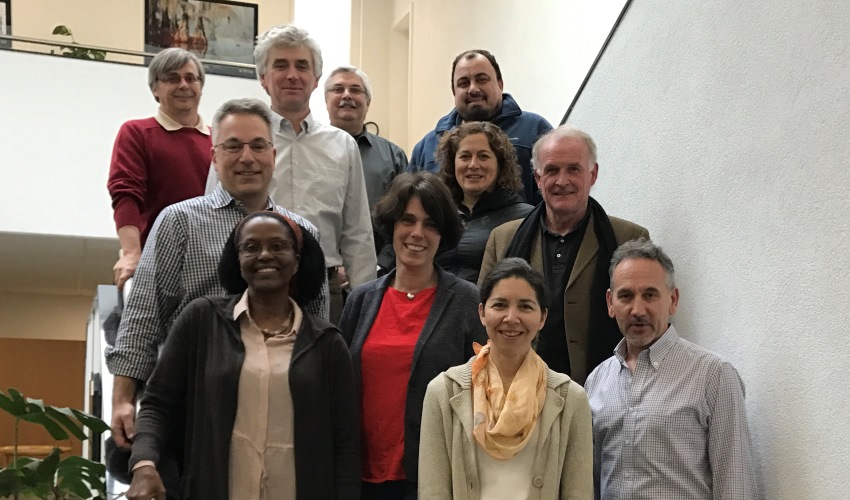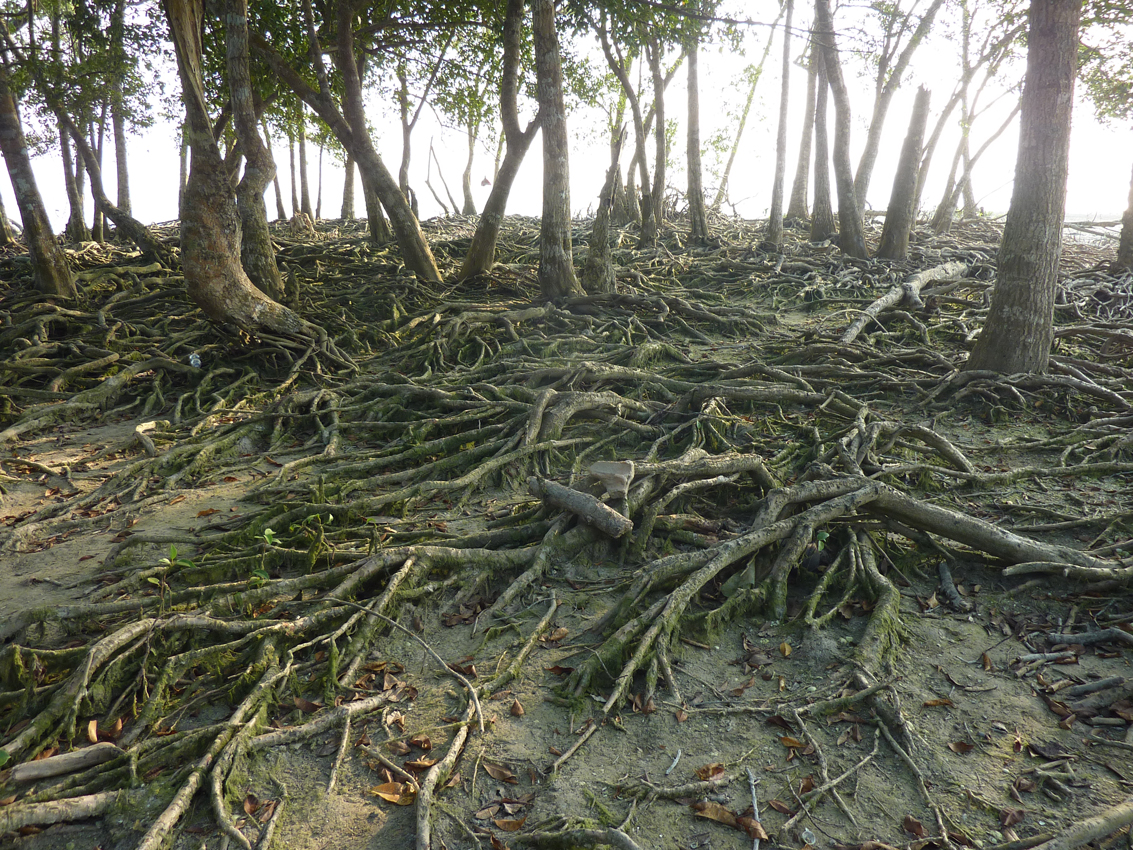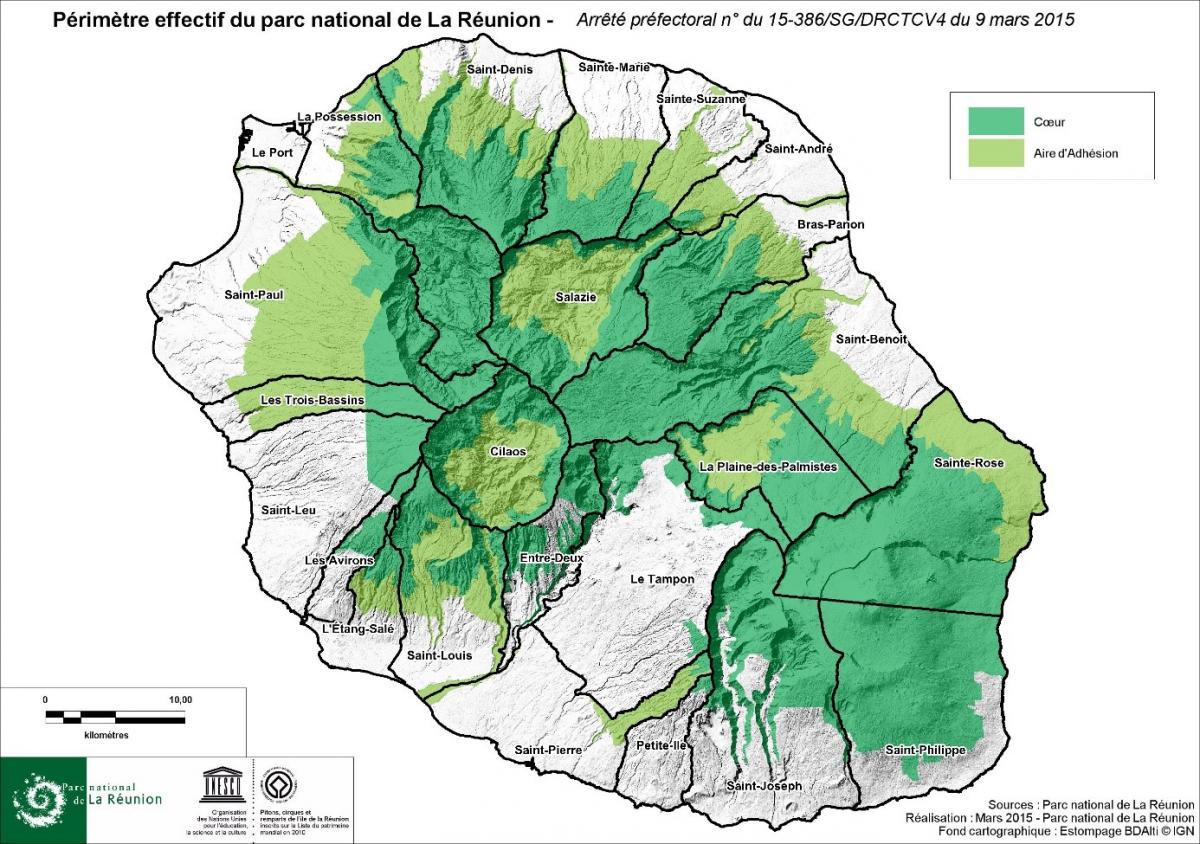Nine nominations for nature sites in 2017 reviewed by IUCN World Heritage Panel
The International Union for the Conservation of Nature (IUCN) is reviewing nine World Heritage nominations with natural criteria, including two extensions and seven new sites, which are proposed for 2017. The IUCN World Heritage Panel gathered in December in Gland, Switzerland to consider the proposals, as part of a rigorous evaluation process which will conclude in April.

From left to right, back to front: Frédéric Launay, Tim Badman, Pedro Rosabal, Tarek M. Abul Hawa, Cyril Kormos, Jenna Boon, Hervé Lethier, Charlotte Karibuhoye, Barbara Engels, Marina Cracco, Peter Shadie.
Photo: IUCN
IUCN makes recommendations on whether a natural site should be inscribed on the World Heritage List or not, as the official advisory body on nature to the World Heritage Committee. A wide range of information is reviewed for this evaluation work and IUCN’s World Heritage Panel is essential to this process. Following the Panel’s meeting, IUCN will gather more information on a number of the sites proposed for listing in 2017.
IUCN’s recommendations will be issued six to four weeks ahead of UNESCO’s World Heritage Committee meeting, which takes place from 2 to 12 July in Krakow, Poland.
Proposed sites and extensions (alphabetically, by region and site):
|
AFRICA |
|
| ASIA |
|
| EUROPE |
|
| LATIN AMERICA |
|
Forest sites feature among the nominations, such as Argentina’s Los Alerces National Park, which contains a forest of one of the longest-living trees on Earth. The currently named “Primeval Beech Forests of the Carpathians and Ancient Beech Forests of Germany”, which was inscribed in 2007 and extended in 2011, is proposed for further extension in 10 countries across Europe. The nominated sites also include savannah, mountains and seascapes.
Nominations are proposed for inscription on the World Heritage List by states parties who have ratified the 1972 World Heritage Convention – a unique conservation instrument protecting natural and cultural heritage considered to be of ‘outstanding universal value’. As the advisory body on nature under the Convention, IUCN is responsible for evaluating all nominations containing natural criteria.
IUCN makes recommendations to the World Heritage Committee, which takes the final decisions during its annual session in July. The 41st World Heritage Committee meeting will take place in Krakow, Poland from 2 to 12 July 2017.
Evaluation process and the IUCN World Heritage Panel
The rigorous evaluation process involves field missions and desk reviews, as well as consultation at the international, regional and local level. IUCN consults widely with experts who have relevant knowledge of the sites or the natural values they represent.
The IUCN World Heritage Panel is essential to this process. It meets annually to provide technical and scientific advice to IUCN on its work on World Heritage, ensuring the highest quality of recommendations is provided to the World Heritage Committee.
The panel is composed of 12 conservation experts specialised in fields relevant to the World Heritage process, regionally and on the ground. Their collective expertise, together with the knowledge provided by independent field evaluators, covers all major technical aspects of a nomination’s evaluation.
Before a recommendation can be made by IUCN, a wide range of information is reviewed, including nomination dossiers and supporting information provided by the state party, field missions carried out by independent experts, data supplied by the UNEP World Conservation Monitoring Centre, comparative analyses and other significant material.
In line with UNESCO procedures, IUCN’s recommendations remain confidential until six to four weeks prior to the World Heritage Committee meeting and are expected to be made public by UNESCO’s World Heritage Centre circa 19 May and 2 June 2017.



